Virgil Abloh hacks the Vitra archive to create vision of a home in 2035
Source:Dezeen
Virgil Abloh has adapted the designs of Jean Prouvé and the Eames' to create his vision of the home of the future, which is installed in the Zaha Hadid-designed fire station at the Vitra Campus.
Virgil Abloh has adapted the designs of Jean Prouvé and the Eames' to create his vision of the home of the future, which is installed in the Zaha Hadid-designed fire station at the Vitra Campus.
The designer delved into the Vitra archive to put together the exhibition Twentythirtyfive. He hacked and reimagined many of the furniture brand's most iconic products to help him imagine the home of a young adult in 2035.
His vision includes a seesaw made out of Charles and Ray Eames' Wire Chairs and a storage cabinet with bricks for shelves.
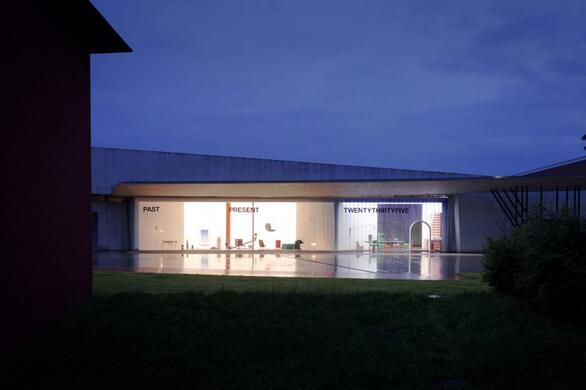
Twentythirtyfive is on show at the Vitra Fire Station
Three of Abloh's twists on the classics will be available to buy in a limited edition later today, via the Vitra website.
"2035 is not that far into the future, but it still lies ahead," said Abloh. "Our world will be a different place by then. And as a design community, we should be thinking about that in the larger sphere of what we’re doing."
"It's arguable whether we will even have a need for furniture by 2035," he added.
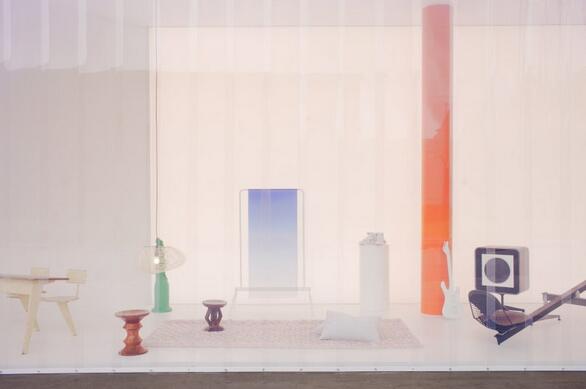
The first section of the show is designed as an "assemblage of memories"
Vitra approached Abloh to help the brand target the "emerging generation". They felt the designer – whose work spans fashion, architecture, music, furniture and art – could help make their products more accessible to social-media-minded consumers.
"What I found particularly inspiring was that Virgil Abloh came to the table as an outsider, with a fresh look at our collection and a different pace, free of constraints," explained Nora Fehlbaum, CEO of Vitra.
"I'm interested in the way that he structures knowledge and passes it on to a new generation in such a condensed manner," she said. "He manages to shift the topic of design classics away from the discourse of an intellectual elite to make them accessible to a wider public."
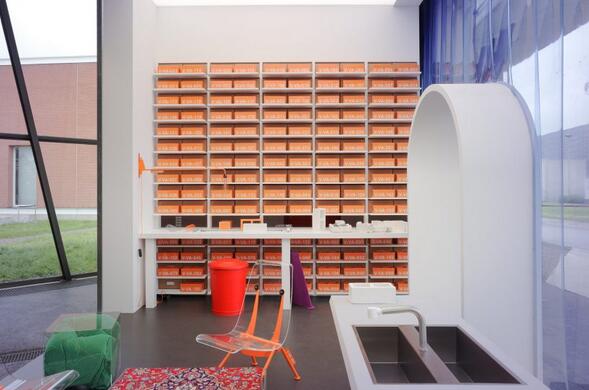
The second section imagines the first home of a young adult in 2035
Twentythirtyfive opens to the public today at the Vitra Fire Station in Weil am Rhein, Germany, coinciding with Design Miami/Basel taking place nearby.
The exhibition is divided up into two parts. The first section, called Past/Present, is designed as "a condensed assemblage of memories".
It brings together Vitra heritage products that are expected to resonate with young people, including the Eames Stool and the Ball Chair by Eero Aarnio.
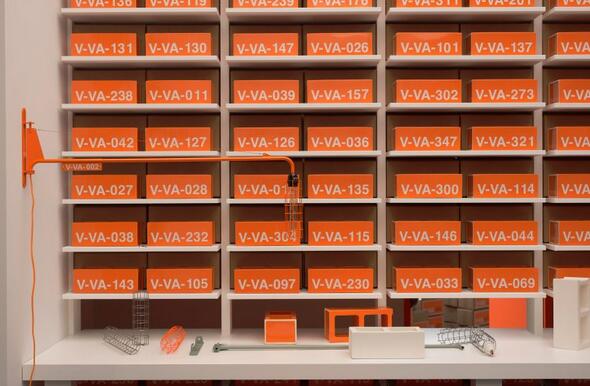
This space include three new or hacked products by Abloh
The second section looks ahead, imagining the first home of a young adult in 2035. Called Tomorrow, it looks at how furniture will have developed over the next 16 years, with familiar objects rendered in new ways.
With the line between home and workplace increasingly blurring, the space is conceived as a space of both work and leisure.
Included are the three new products, two of which are Jean Prouvé designs.
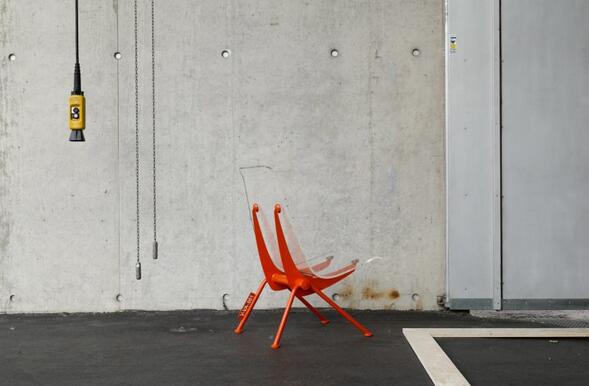
Abloh has reimagined the 1950s Antony armchair by Jean Prouvé
The 1950s Antony armchair is reimagined with a clear plexiglass seat, instead of wood, and its steel frame is coated with bright orange lacquer. Abloh's version of the 1940s Petite Potence wall lamp is also orange, with a metal cage around the LED bulb.
"One of my design signatures has always been commenting on the past as a means of introducing it to its future," said Abloh, who is also a Dezeen Awards 2019 judge.
"To me, design always has the inherent idea of being a bridge from the past, with an eye towards the future," he stated.
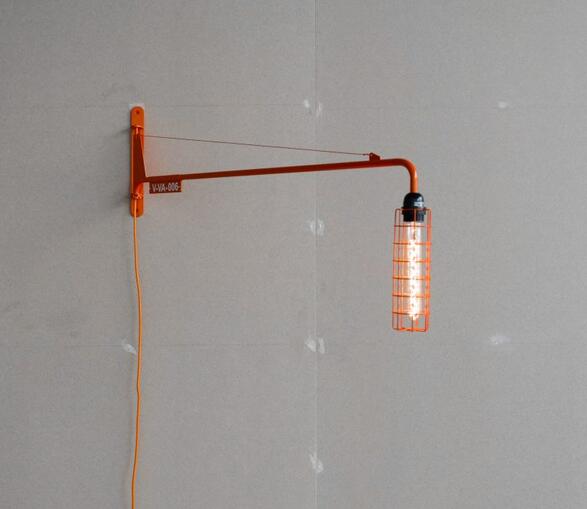
Abloh has also updated Prouvé's Petite Potence wall lamp
The final new product is a numbered orange brick – the key element of the storage cabinet that covers one wall in the space. It is simply called Ceramic Block.
Fehlbaum believes Abloh is "on an unstoppable mission" and that his ideas can have a similar impact on the young people of today as Prouvé's did in the 1930s and 40s.

Ceramic Block is a brick that can be used for storage
"I admire designers who don't conform to the status quo, and who have the courage to design objects that are not merely attractive," she said.
"Like the objects by Jean Prouvé, Virgil Abloh's creations are also provocative; they don’t necessarily appeal at first glance. For this reason there is a certain kinship."

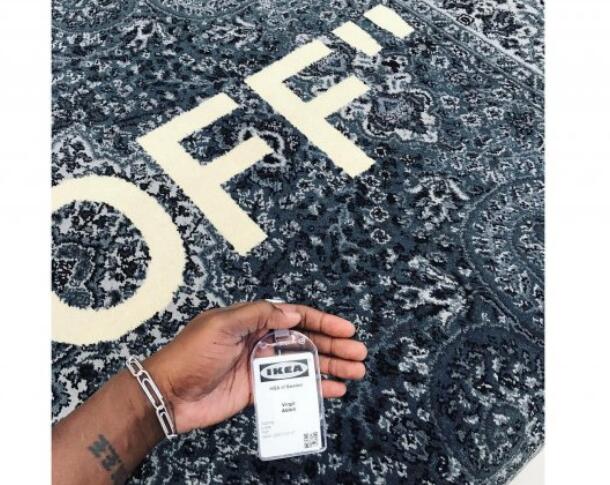


 沪公网安备31010402003309号
沪公网安备31010402003309号



